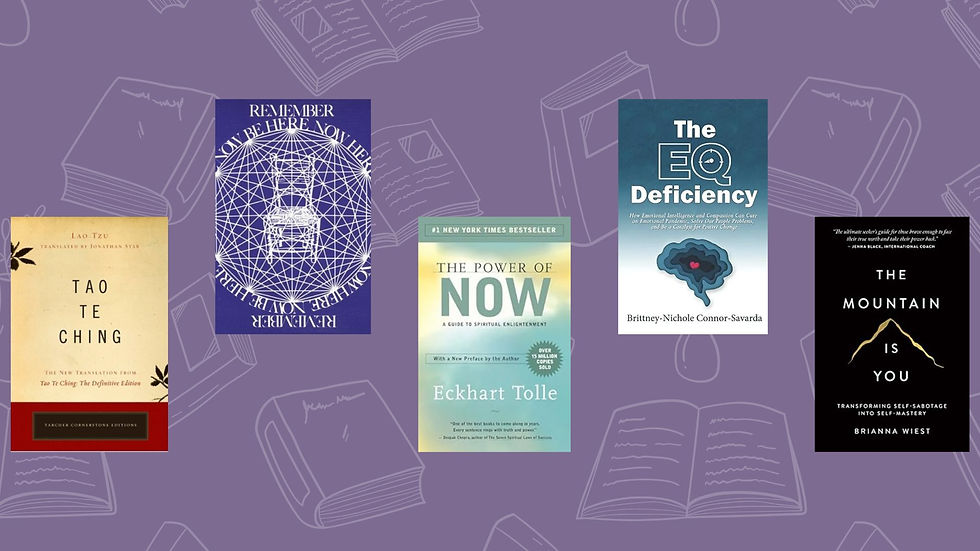The EQ Skill that Sets the Tone for Your Greatest Success and Well-Being
- Doni Landefeld, Ph.D.

- Apr 1, 2022
- 4 min read
Updated: Aug 2, 2022

Misery loves company and attitudes are contagious.
These familiar sayings speak to the potential of how one’s perspective can quickly rub off on others. We are pre-wired toward a negativity bias. This feature served us well in the prehistoric days when we experienced more physical dangers. Now, our threats lean more towards those of a psychological nature, and yet our brains have not evolved to catch up to the shift in predominant threats.
Psychologist Rick Hanson posits that our minds are like Velcro, where negative thoughts stick and can be difficult to untether. In contrast, positive thoughts like Teflon bounce off and can become fleeting and quickly forgotten experiences.
Contemplate moments when you have experienced a setback or challenge and how long it took you to recover vs. the length of time you savored a high point. Now, think about the moments you have been in the presence of someone who strives to be both cheerful and confident. Especially for leaders, it is an incumbent duty to practice optimism to bring out the best in others and facilitate successful outcomes. Exuding a cheerful and confident outlook is more inspiring and motivating! For those arguing the need to be realistic, of course, this is important, and it is still possible to be optimistic at the same time!
One of the pre-eminent experts on optimism is Dr. Martin Seligman. His research spans decades and has revealed two important points about optimism:
Optimism makes us more effective than pessimism.
Optimism can be learned.
Practicing optimism directly correlates to performance, productivity, health, and earning potential; those who practice being optimistic will reap the benefits across all these areas. In contrast, those who exude a more pessimistic outlook will accomplish less, are typically more depressed, suffer greater co-morbid health conditions, and typically make less money.
Applying the EQi 2.0 model of Emotional Intelligence from Multi-Health Systems, optimism is best defined as the following:
The ability to look at the bright side of life and maintain a positive attitude, even when faced with adversity
The ability to bounce back from disappointment
A focus on the future and possibility instead of the past and pathological dysfunction
The first step in building up any new skill is to get crystal clear (self-aware) of where growth opportunity lies. According to Seligman, optimism includes an awareness of your explanatory style (outlook). This is where understanding the ‘3 P’s’ becomes critical to increasing awareness. Note that all P’s are associated with pessimism, so remember.
“P” = Pessimism!
Permanence – those who are more pessimistic espouse situations or tendencies as permanent, whereas those who are more optimistic lean toward a temporary outlook. Despite challenging times, the optimist recognizes that the situation is temporary.
Pervasive – a pessimist defaults to the belief that misfortune is widespread and universal, occurring across all circumstances, whereas an optimist attributes outcomes as situational. In the example of a layoff from work, a pessimist will ruminate in doubt and despair that they are unlikely to find new employment.
Personalization – optimists don’t personalize bad events to their capability. Instead, they understand that other attributes like their state of mind, level of ability, and the environment can impact the outcome. Pessimists blame negative outcomes on their lack of ability and their lack of capability to perform differently in the future.
In the spirit of Dr. Stephen Covey’s ‘habits’ to incorporate for the greatest impact and effectiveness, there are also habits to incorporate into our daily lives to ‘program’ optimism as our default. Consider the following as part of an operating system for your brain to reframe to positive emotion:
Optimists aren’t easily rattled by problems and don’t ruminate over them. Instead, they face, analyze, and attack their problems and acknowledge that problems are just a part of life. This habit applies problems or challenges as temporary instead of permanent.
Optimists shrink the gap and embrace partial solutions. They are not consumed with all or none. They understand that getting started is the most meaningful and challenging step. Getting started builds momentum and facilitates creativity and progression to the next steps in problem-solving.
Optimists prioritize their well-being and build in time to recharge regularly. They understand that when they are at their best, they can give their best. And they also understand that not prioritizing well-being leads to lower productivity, stress, and burnout in worst-case scenarios.
Optimists disrupt negative thoughts. They understand that feelings come from thoughts, and we control what we think. This is the foundation of emotional intelligence: Thoughts + Feelings = Behavior (and outcome).
Optimists make time to practice gratitude to build appreciation. The law of attraction applies in this positive reframe – we attract what we give and practice. To experience more appreciation in life, it is necessary to practice gratitude.
Like building any new skill, reframing your outlook requires commitment and consistent practice; regular practice facilitates the permanence of a habit or desired behavior. Building optimism toward a default mental operating system has implications for communicating, leveraging our strengths, prioritizing well-being, and practicing appreciation. One simple way to slowly reframe and increase positive emotion is to maintain a gratitude journal. Every day, record one to three things for which you are thankful. On the more challenging days that we all experience as being perfectly imperfect humans, an overlooked blessing like the beauty of a flower, sunset, or smile of a loved one is a great way to recount gratitude. It is possible to program a more optimistic mindset with intentionality and consistency, so it becomes your default outlook.



Comments